Mexico is a perfect place for growing edible plants and vegetables. The soil is very fertile, and the weather is generally warm, which is excellent for growing vegetables and fruits. This isn’t surprising considering corn has been a staple in Mexico for thousands of years. Mexican cuisine mostly uses native ingredientes.
Follow along to learn everythong about three vegetables native to Mexico and other common native fruits!
1. Prickly Pear
Technically, prickly pears are vegetables and fruits. These delicious vegetables are produced from the prickly pear cactus. Almost all parts of prickly pear cacti are a great food source. You can also eat the pads, also called nopales. These pads are edible all year round. However, you should eat them with caution. You must carefully remove the thorns from the plant before rinsing and preparing. Prickly pears, on tIt’sther hand, are red fruit or vegetables that ripen during summer. They also have glochids on their outer layer. If you don’t remove the outer layer and the glochids, you might feel discomfort in your throat, lips, and tongue.
Prickly pear plants are native to Mexico. They are an essential symbol in Mexico and are also found on Mexico’s national flag. This delicious cactus is found throughout the United States and the Mesoamerica region. In Australia, though, they were an invasive species. These quickly spreading plants wreaked havoc across Australia, rendering 5,000 square miles of farming land unproductive. When the moth Cactoblastis cactorum was introduced to Australia in 1925, it wiped out the prickly pear.
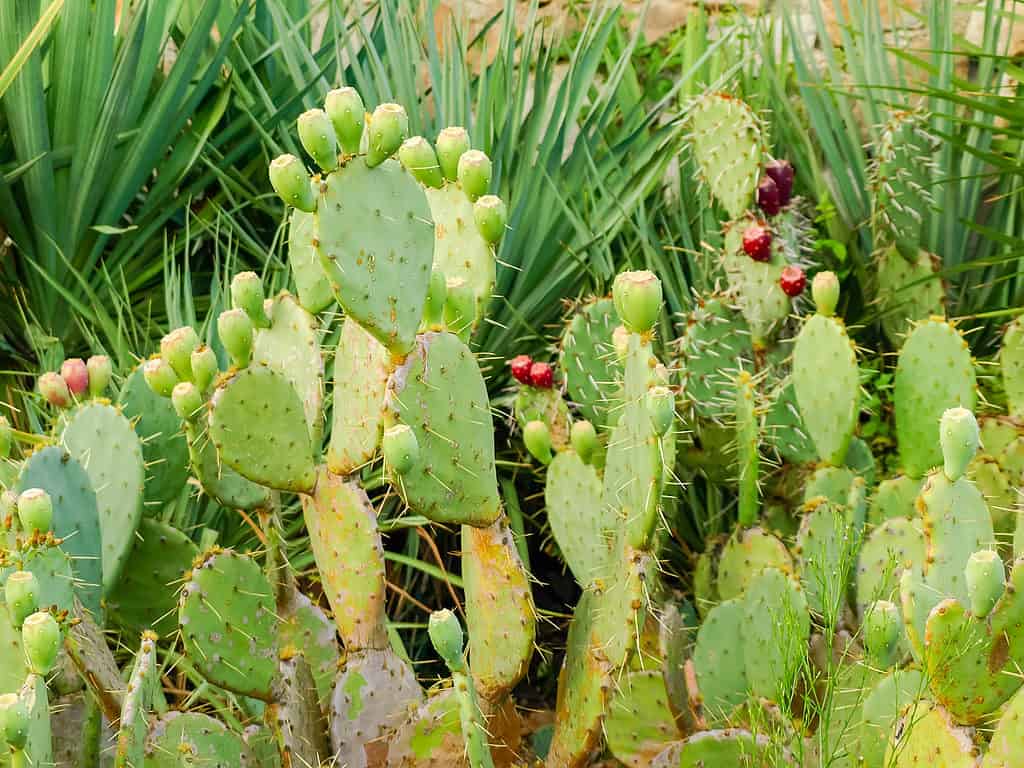
Prickly pear plants are native to Mexico. They are an essential symbol in Mexico and are also found on Mexico’s national flag.
©anmbph/Shutterstock.com
2. Corn
Corn is a staple in Mexican cuisine. It’s thought to be native to Mexico. However, the corn we know today is very different from prehistoric corn. Scientists estimate that corn grew and thrived in Mexico over 10,000 years ago. Corn developed from teosinte, an ancient wild grass with small far-apart kernels. Although corn first began in Mexico, it soon expanded into the Southwestern United States and down to Peru. The spread of corn went as north as southern Maine.
When European colonists settled in North America, corn flourished. It was the first time Europe had heard of corn. However, it didn’t take long for European settlers to learn how to grow and cultivate corn, spreading it throughout the world. Corn is now a hardy and important crop in the United States. This delicious vegetable is used to make corn tortillas, which are common in Mexico. These tortillas are used in fajitas, quesadillas, tacos, and tostadas.

Corn is a staple in Mexican cuisine.
©Tatiana Romanova-Sargaeva/Shutterstock.com
3. Ayocote Morado Bean
Ayocote morado beans are delicious, beefy, large purple runner beans native to Mexico (Oaxaca). They are very popular beans for vegetarians and vegans because of their versatility. Ayocote morado beans are one of the first cultivated crops of the New World. These old plants were likely domesticated between 4000 and 2000 BC. Although ayocote morado beans are purple, these runner beans come in many different colors, including red, beige, black, and white.
They grow in vines, and there are wide varieties. Ayocote morado beans are also called “runner beans,” “multiflora beans,” or “butter beans.” Although these beans are sometimes referred to as “butter beans” because of their smoothness, they aren’t lima beans, which share the same nickname. The pods of the plant are long and knife-shaped, and the flowers are usually red but can come in different colors. Although Ayocote morado beans are native to Mexico, they flourished across North America after European settlers spread the seeds. Interestingly, they weren’t always grown in Europe or North America as a food plant but as an ornamental.
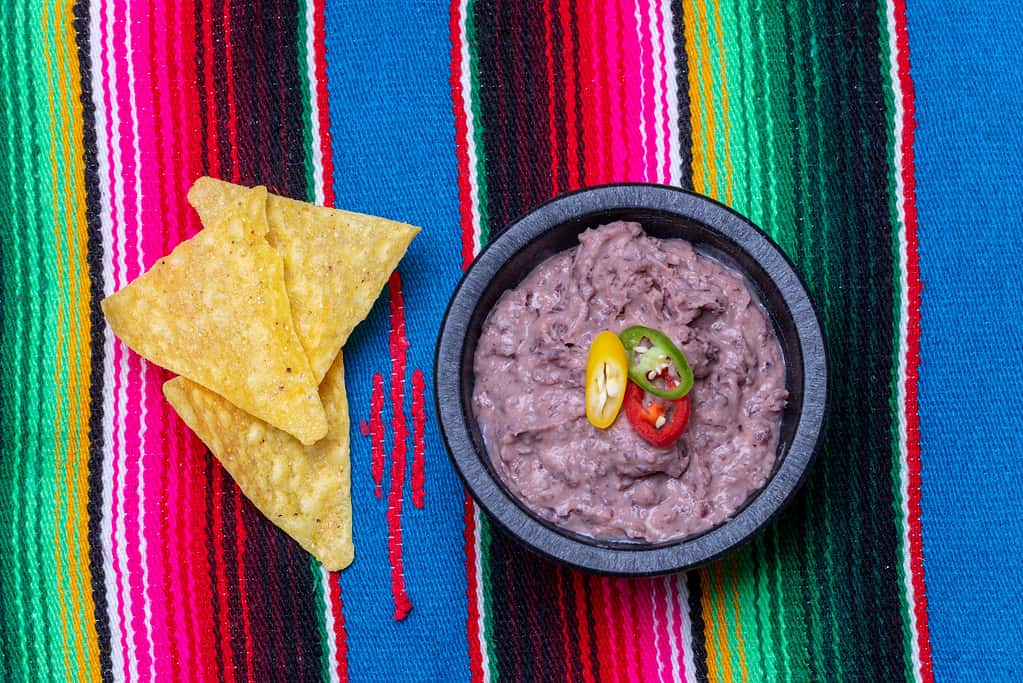
beans are delicious, beefy, large purple runner beans native to Mexico (Oaxaca).
©Bernd Juergens/Shutterstock.com
Fruits Native to Mexico
Are you ready to discover four fruits native to Mexico? Keep reading!
Avocados
Avocados are essential fruits in Mexico with a long and interesting history. There are a few theories on the history behind avocados. Some experts believe a version of these fruits first appeared in Africa. It then traveled to North America, down to Central Mexico. Another theory points to southern central Mexico as the origin of the avocado. Some scientists believe prehistoric mammoths ate the fruit and disposed of the seeds while traveling long distances, which spread the trees. However, it’s likely that Mexican avocados originated in the Tehuacan Valley in the state of Puebla, Mexico, over 10,000 years ago. It’s also possible there were three separate domestications of the avocado. Native Oaxaca criollo avocados is the ancestor to modern day avocados. It was dark black, small, and enclosed a large seed. Avocado trees are also old. Experts estimate the history of avocado trees began as early as 5,000 BC.
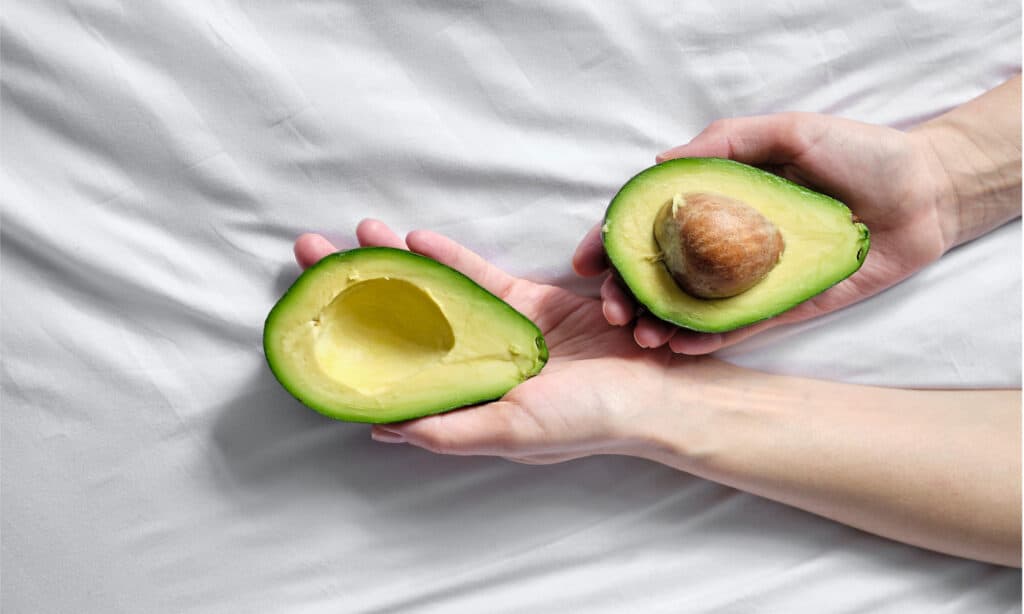
Avocados are essential fruits in Mexico with a long and interesting history.
©iStock.com/Iuliia Pilipeichenko
Papayas
Papayas are delicious and nutritious fruits with a mysterious past. Although we don’t know precisely how or where this fruit came from, its domesticated origin is Mexico and Central America. Then, they spread quickly throughout the world. By the early 16th century, papaya trees were growing in Panama and the Dominican Republic. However, it wasn’t until Spanish colonizers invaded Central America and Mexico that the fruit spread across the world. The Spaniards brought papaya seeds to the Philippines, the Malay Peninsula, and the East Indies. While there is a lot we still don’t know, ancient Mayans cultivated and developed the modern papaya we know today. They cherished the tree, often calling it the “Tree of Life.” They used papayas for their healing properties and ground the fruit into a paste.

While there is a lot we still don’t know, ancient Mayans cultivated and developed the modern papaya we know today.
©New Africa/Shutterstock.com
Poblano Peppers
While peppers are constantly called vegetables, they actually are fruits. Fruits refer to edible, ripened, and dried ovaries of flowers, which contain seeds. Since peppers are produced from the fertilization of flowers, they are fruits. With that being said, what’s more Mexican than peppers?
Poblano peppers, also known as “poblano chiles” or “ancho chilis,” are likely native to Mexico. These mild peppers natively grew in the mountainous areas near Puebla. On the Scoville scale, poblano peppers score 1,000–1,500 SHU. For hundreds of years, Aztecs used poblano peppers in their many dishes. Still, poblano peppers are important and popular ingredients in Mexican and Tex-Mex cuisines. Some dishes that use poblano peppers include roasted poblanos, stuffed poblano peppers, chicken chili, and more. These delicious peppers are very healthy. One serving (1 cup) contains about 30 calories and 134% of the Daily Value (DV) of Vitamin C. Like other peppers in the Capsicum annuum family, this pepper is filled with antioxidants. Poblano peppers are dark green and wide. When ripe, they are about 4 inches long and 2 inches wide. However, some poblano varieties can grow up to 6 inches long and 3 inches wide.
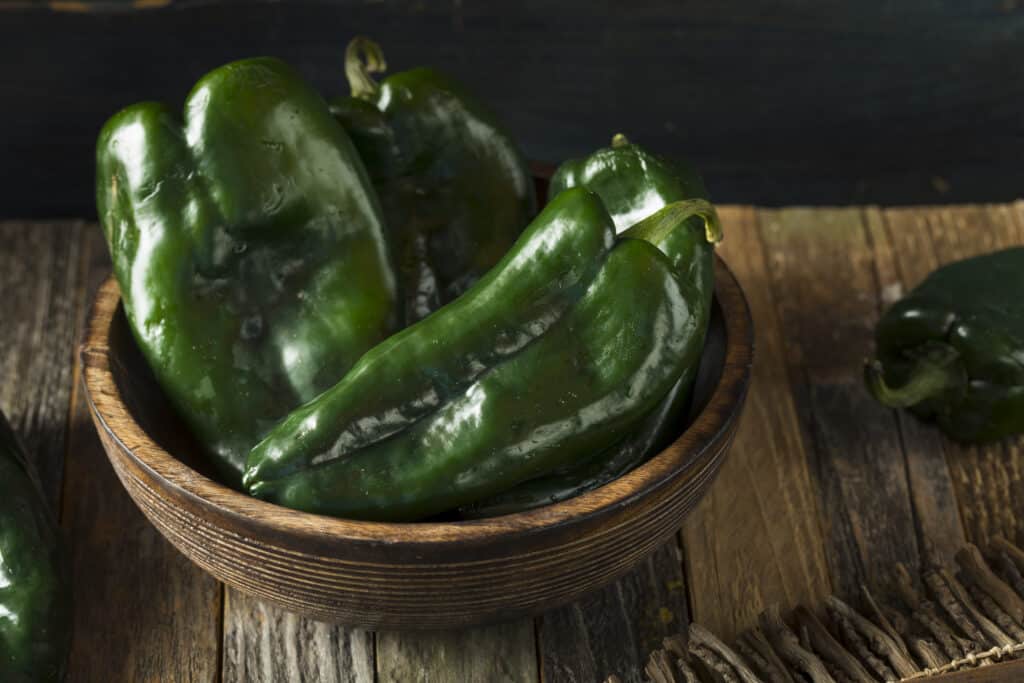
Poblano peppers, also known as “poblano chiles” or “ancho chilis,” are likely native to Mexico.
©Brent Hofacker/Shutterstock.com
Chayote
Chayote is a fruit you can eat raw or cooked. However, it’s mainly eaten cooked. It has the texture of a squash and is part of the gourd family, Cucurbitaceae. Chayote features plenty of vitamin C. This nutrient-rich fruit is pear-shaped with wrinkles. Its outer layer is bright green, but the inside is light green to white. The chayote plant is a climbing vine that grows well over 39 feet long. Chayote fruits originate from Mesoamerica between southern Mexico and Honduras. However, most varieties come from Mexico and Guatemala. It spread quickly as one of the first foods introduced to the Old World. During the Columbian Exchange, this delicious plant spread throughout the Americas.
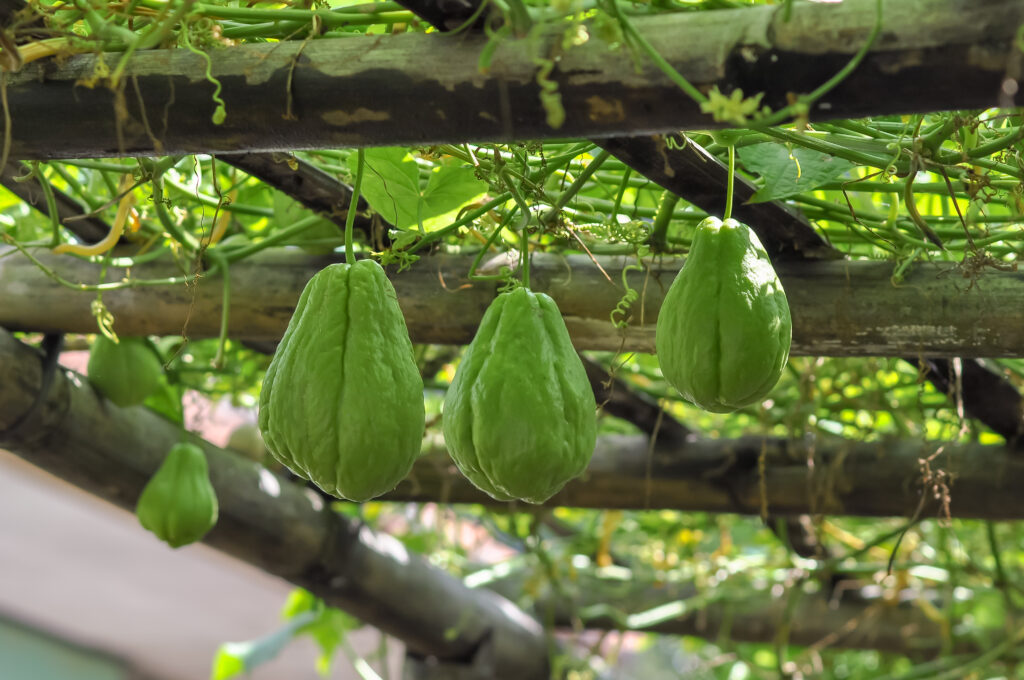
Chayote has the texture of a squash and is part of the gourd family,
Cucurbitaceae.
©Sukarman/Shutterstock.com
The photo featured at the top of this post is © lunamarina/Shutterstock.com
Thank you for reading! Have some feedback for us? Contact the AZ Animals editorial team.







